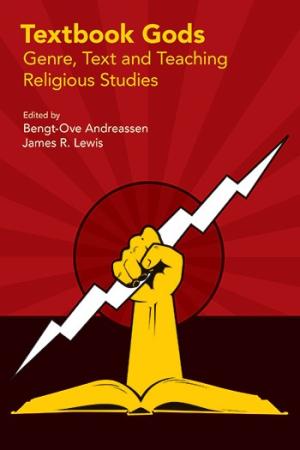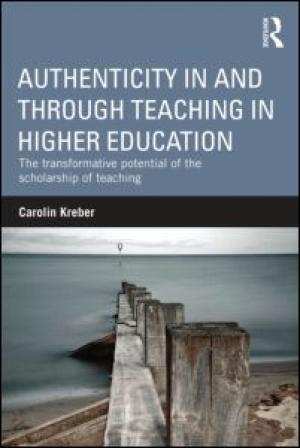Resources by Christopher M. Jones

Textbook Gods is a collection of essays by predominantly European scholars of religion on the use of textbooks in primary, secondary, and post-secondary educational settings. Textbooks are understood to be books written primarily for classroom teaching that convey “key knowledge” within a given academic discipline (2). As such, textbooks generally present disciplinary knowledge as stable, firmly established, and definitive. The essays in this volume wrestle, first, with the problems of bias and essentialism in such authoritative, institutionally-sanctioned books. By extension, they also consider the impact of religious studies textbooks in reproducing knowledge of religion in the public sphere. Satoko Fujiwara argues in her essay, for instance, that the religion textbooks used in secular Japanese public schools prioritize world religions over ethnic religions and provide monothetic and essentializing accounts of these religions (for example, Christianity is love, Buddhism compassion, Islam obedience). Likewise, in their contributions James Lewis and Carole Cusack criticize textbooks for validating students’ ethnocentric prejudices about sub-Saharan African religions and aboriginal Australian religions. In a somewhat different vein, Bengt-Ove Andreassen critiques the way that introductory Norwegian textbooks present “religion” as a positive, universal phenomenon that is necessary for human fulfillment and flourishing. Other essays have a more methodological focus, discussing the ways that scholars of religion can assess religion textbooks, both as teaching resources and as indices of the status of scholarship on religion. Katharina Frank outlines a theoretically-informed methodology for assessing the ways that a new Swiss world religions textbook frames the phenomenon of religion. Mary Hayward surveys the use of visual aids in four textbooks that are used in England’s secondary school religious education courses, tabulating types of images and their relation to the text. She calls for a stronger interrelation between text and image because the privileging of text mirrors the privileging of the intellectual over the material in the study of religion. The essays in this volume are generally of good quality: they are well written, they fully contextualize the textbooks that they discuss, and they engage contemporary debates in the scholarship of religion (for example, on the public role of religion in secularizing societies; on the utility of “religion” as an analytical category). This volume should not be seen as an aid for teachers of religion who are considering which textbooks to use in their classes. Though the essays in it discuss many different textbooks at length, the primary topic is not their specific merits and demerits, but rather the role of textbooks as a genre in the production of public knowledge of religion. I would strongly recommend this book for experienced scholar-teachers who are reconsidering how they use textbooks, or even if they should use textbooks at all. The range of materials covered by the essays, and the diversity of opinions they present, make Textbook Gods a valuable resource.

This book explores the role of authenticity in higher education. Kreber’s work contributes to the Scholarship of Teaching and Learning movement, which includes post-secondary educators from a variety of disciplines who emphasize teaching as a scholarly discipline in its own right (Huber and Morreale, Disciplinary Styles in the Scholarship of Teaching and Learning: Exploring Common Ground [Washington, D.C.: AAHE] 2002). Kreber criticizes the movement, however, for being insufficiently attentive to issues of power and social justice, and she posits her research as a corrective (5). Authenticity, Kreber argues, involves not only reflective awareness of one’s own inner motives and dispositions, but also critical consciousness of the power relations that determine one’s place in the social order (26-27, 38-39). Authenticity inteaching promotes awareness of one’s positionality as a teacher (50-52, 133-140, 171), and it leads one to serve the best interests of one’s students. Authenticity through teaching, meanwhile, defines, and ultimately attains, the students’ ultimate interest: coming into their own authenticity. Higher education thus comes to promote a more just and sustainable world (44-49). Authenticity In and Through Teaching unfolds in eight chapters, plus a conclusion. Chapter 1 engages philosophical and pedagogical literature to interrogate the concept of authenticity. Chapter 2 contains Kreber’s core argument, summarized above. In Chapter 3, Kreber explores the implications for the Scholarship of Teaching and Learning movement, arguing that it is distinguished from pedagogical theory by its reflective stance: it involves the application of research to one’s own teaching practice (75). For these reasons, in Chapter 7 she challenges the notion of the scholarship of teaching as an evidence-based practice. In Chapter 4, she draws on Alasdair MacIntyre’s unique connection between practice and virtue to argue for a moral imperative in teaching practice (MacIntyre, After Virtue: A Study in Moral Theory [Notre Dame, Ind.: University of Notre Dame Press] 2007). Chapters 5 and 6 invoke the critical self-reflection inherent to authenticity as a means to counteract the distorting effects of power in the university classroom. Chapter 8, finally, argues that authentic scholarship of teaching and learning demands public engagement. Operating within the framework of engaged pedagogy, Authenticity In and Through Teaching provides a useful, coherent, and comprehensible framework for conceptualizing the practice of teaching. It also serves as a point of entry to contemporary scholarly literature in several disciplines, including pedagogical theory, moral and existential philosophy, and critical social theory. Finally, the moral imperative that Kreber derives from her understanding of authenticity, rooted as it is in virtue theory, would be particularly applicable in liberal arts and seminary contexts (where the moral shaping of the student is part of the educational process). I recommend this book for scholar-teachers who want to expand their awareness of theoretical literature on pedagogy and bring it to bear on their teaching practice.